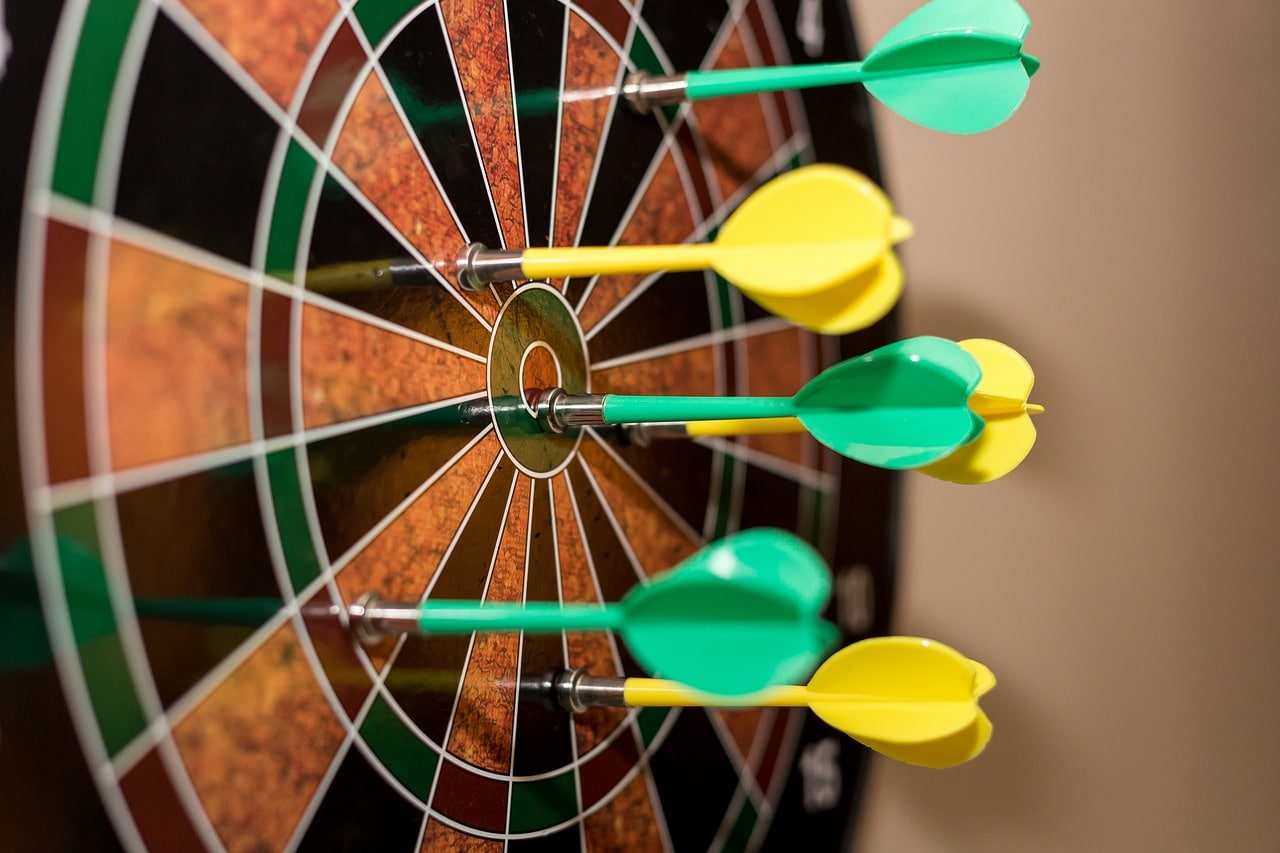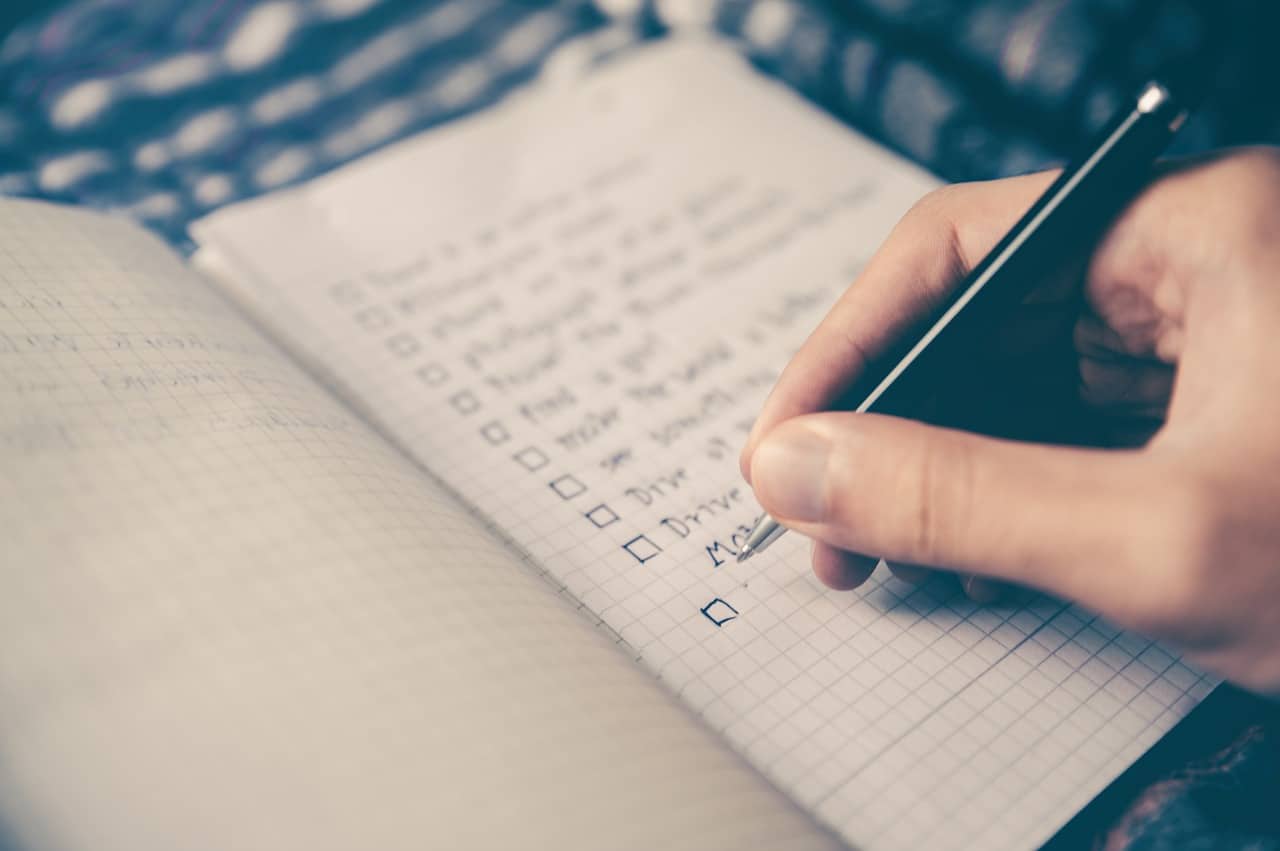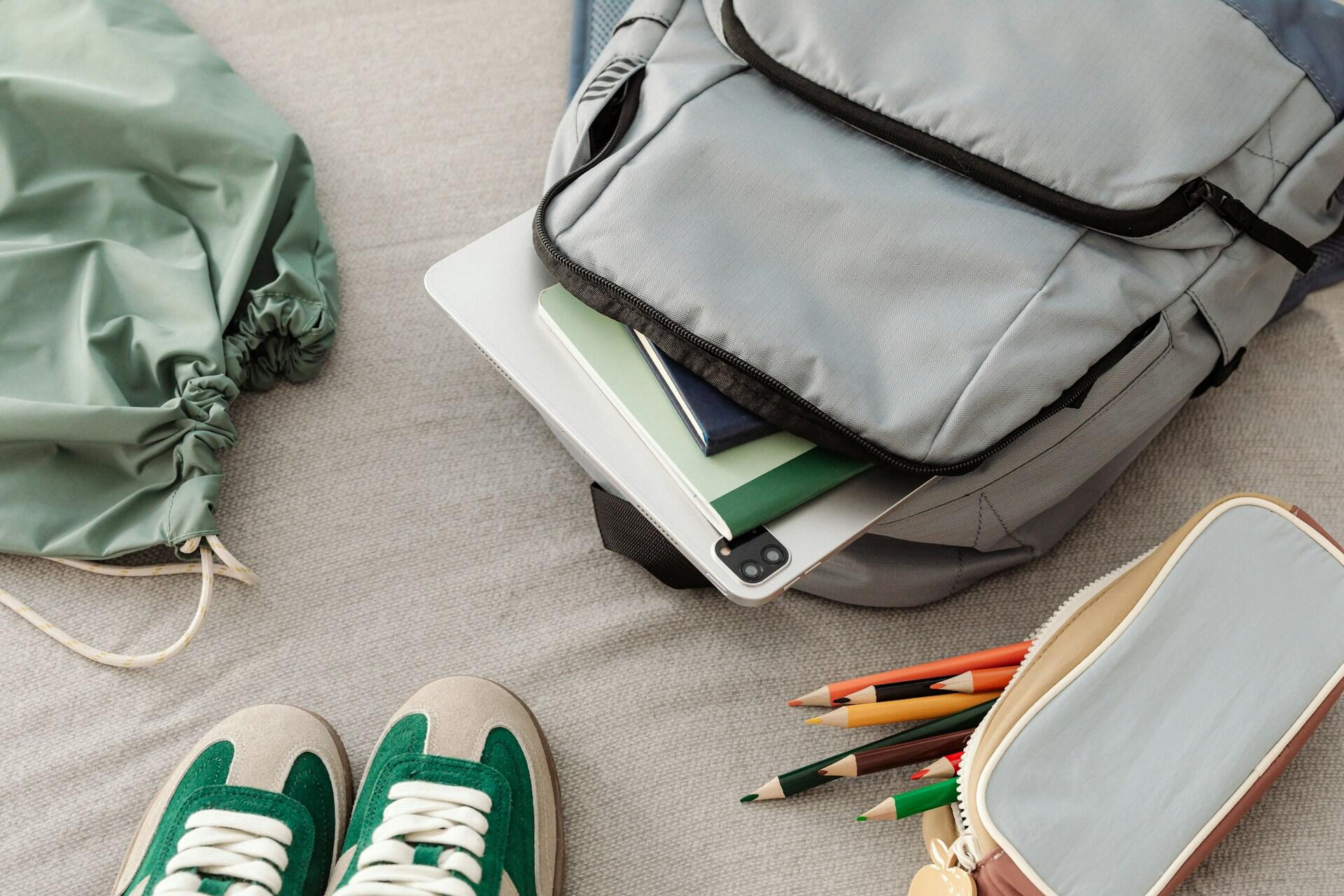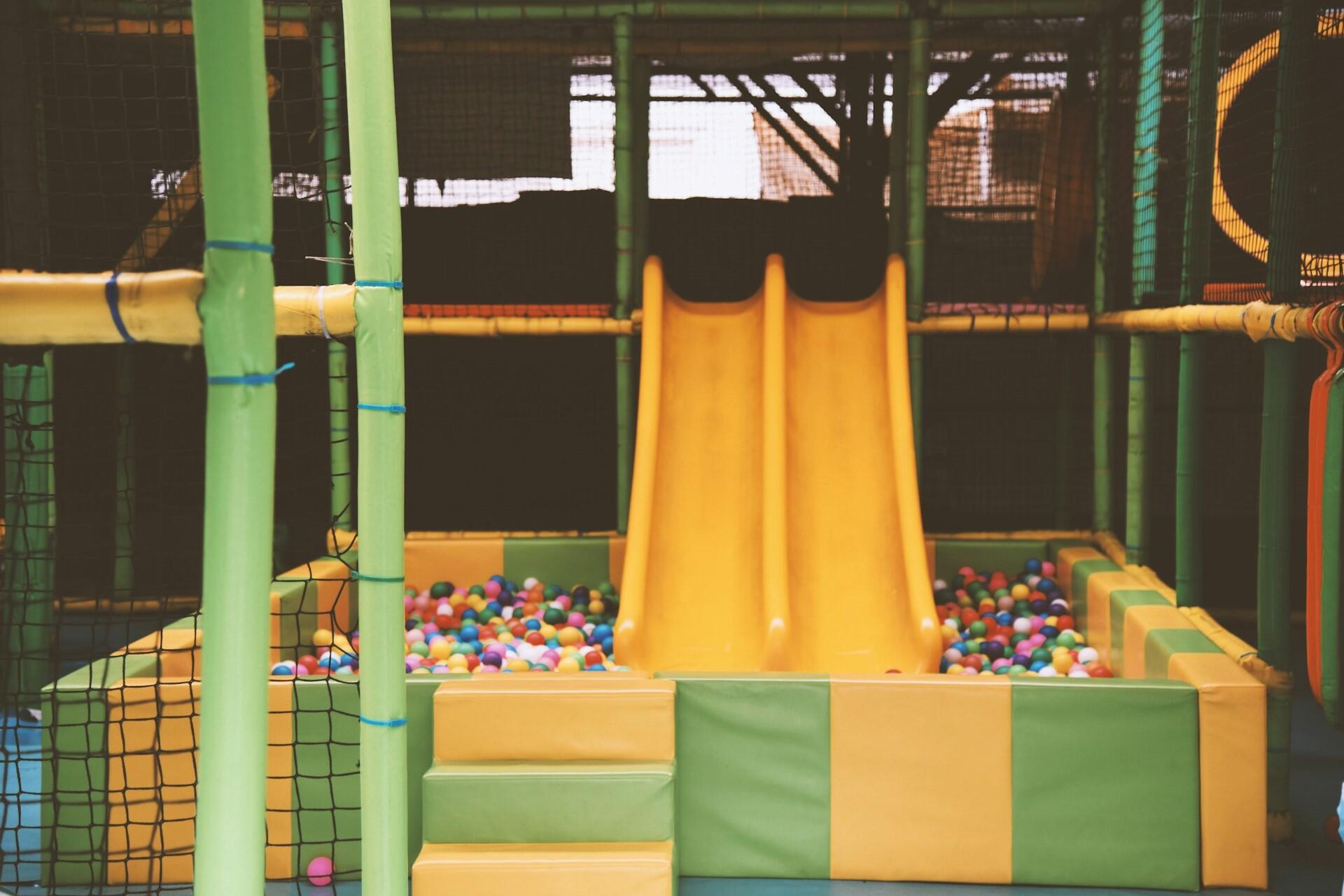So, it's the start of the school year. Are you ready?
You've got all your supplies — pens, pencils, books, pencil cases, stationery and accessories. You've managed to find the perfect lunch boxes, drink bottles and other containers. You've memorised your program and timetable. You're ready for day one!
Or are you?
All the best stationery, books and drink bottles in the world will not help you achieve the progress and success you desire at school. A set of the newest coloured pens and other assorted stylish accessories won't help you focus or boost your performance.
You need something else you won't find in the office or school supplies shop.
Goals.
Pack away all of your pencils, containers and other supplies. Grab a couple of pens in different colours and one of your new blank, unlined books and let's have a chat about goal setting before you or your children head back to school.

Why Do We Need to Set Goals?
We are continually setting goals throughout our lives, even when we're not aware of it. As kids, goal setting comes naturally: "I want to do that so I'll keep trying until I can." As adolescents and adults, we often need to actively set individual or group goals, often requiring some sort of action plan for personal motivation.
Goals do not have to be super challenging or large to be useful or effective. You can achieve small goals in short periods of time — a day, rather than years.
Whether small or large, goals are fundamental to our long-term growth as people and our success in life.
The ability to set and achieve goals is particularly important for school and university students.
Specific goals help students move forward
Goals, particularly when written down, help give students clarity and a focus for their learning. They remind students what learning they want to achieve and why.
Smaller goals break down impossible tasks
A large goal can be overwhelming but smaller goals that lead to this overarching goal can be easier to manage and a more positive experience for young children and students.
Goals keep us accountable
We are more likely to continue to work towards something if we've set it as a goal.

Goals help prepare us for what is coming next
For students, 'what is coming next' is adulthood. Students who learn how to set and achieve goals early in life will be better prepared for their adult life.
We know why we should set goals, but how do we do it?
How to Set Personal Goals
Often, when we set goals we make them too big and too general.
I want to improve my health by eating healthy lunch.
I'm going to be a published author with hundreds of books.
I want to get straight A's at school this year.
These sorts of goals are doomed to fail because we don't know where to start. This is where breaking down our goals into achievable chunks can be important. What little steps do we have to take to achieve the final goal?
What is a SMART goal?
SMART goals are a way for people to focus on individual goals, create an action plan and get to work.
The SMART format reminds us that, for maximum achievement, each goal needs to be:
- S — specific
- M — measurable
- A — attainable
- R — realistic
- T — time driven
Teachers in primary school and high school often use the SMART goal format to help support their students to set personal learning goals when they come back to school at the start of the year. They regularly revise their goals, adjust them when necessary and write new ones when previous goals have been achieved.

SMART goals are not the only way to set your personal goals but it is an effective process that is proven to work for all sorts of personal, individual and group goal setting and can be a great help to adults as well as students.

Goal Setting for Back-to-School
For many students, schools provide that much-needed structure, support and consistency in their life. Recent years have been sorely disrupted thanks to lockdowns and school closures at the height of the COVID pandemic. Goal setting would have 'gone out the window' for many students, with their only goal being to log on to remote learning and do their assignments.
As school returns to a new normal, it is the best time to start thinking about achieving goals again.
Remember, small steps and smart goals.
For many children, and teachers, the most challenging part of going back to school is regaining the motivation to get back on track. Skills won't have been lost but they will need to be polished. Performance and progress may have waned but it is possible to start achieving again.
Your time away from the formal learning environment may have given you time to think about your future. You may have decided to change your career path — or, like many others, you may still be undecided or worried about what the future holds.
Believe it or not, right now is the perfect time for goal setting. Things are looking more positive and there is a change on the horizon for education and the way we approach learning.
Find tips for setting goals before heading back to school on Superprof.
Keeping Track of Your Goals
Tracking your progress and performance is the key to actually achieving your goals.
There is no right or wrong way to track your progress, it really depends on your individual learning style and your specific needs. Here are a few ways some people find effective:
Journalling
Whether you use paragraphs, dot points, checkboxes or different coloured pens and pencils, listing your goals in one of your most beautiful books or stationery and referring back to your lists regularly can keep you on track. You may decide to tick off each little achievement or write a diary entry or reflection on your progress each day.
Charts
If you're more of an analytical or mathematical thinker, you may find that if you create a chart for each goal, you'll be able to stay on track to success. Your chart may be in the form of a table, a graph or even fun stickers like the ones you buy for kids — chart your progress in a way that resonates with you and keeps your motivation up.
Calendar
Writing daily goals or tasks on a large format calendar and then crossing them off at the end of the day is a great visual reminder of the progress you are making.
Puzzle
This is fun and ideal for people with a visual learning style. Simply find a picture that represents your goal. Cut it into the required number of puzzle pieces and write the step on the back. Once you've achieved the step, glue it down until your picture is re-formed.
Apps and other online tools
There are lots of goal setting and tracking apps you can use to support your goal achievement journey. Look at Trello or Evernote as a start.
Remember, to keep your motivation up and make the process a positive one, your tracking needs to be simple and it needs to resonate with your personal learning style. It is the instant feedback you are looking for, so make this process work for you.
Celebrating Your Achievements
Congratulate yourself for every achievement — no matter how small or insignificant it may seem.
Acknowledging yourself for the work you've put in to achieving new skills, making progress, overcoming that challenging task or just sticking to your plan is so important. Without taking the time to celebrate, even if you just say 'Well done, me', your motivation will eventually waver.

You don't need to splurge on a grand dinner or a new jacket to celebrate your achievement — but if that's what you want, go for it.
Ideally, the type of celebration or reward you give yourself should be in line with the level of achievement. Small achievement equals small award. Huge achievement equals ... huge reward. Remember, though, that the 'level of achievement' is relative — what is huge for you might not even be remotely challenging for someone else, so don't base your acknowledgement on the achievements and skills of others around you.
Of course, being acknowledged by someone else for the attainment of a goal is great for motivation but, at the end of the day, the only person you have to impress and please is you.
Setting goals is the first step in turning the invisible into the visible.
~ Tony Robbins ~
























